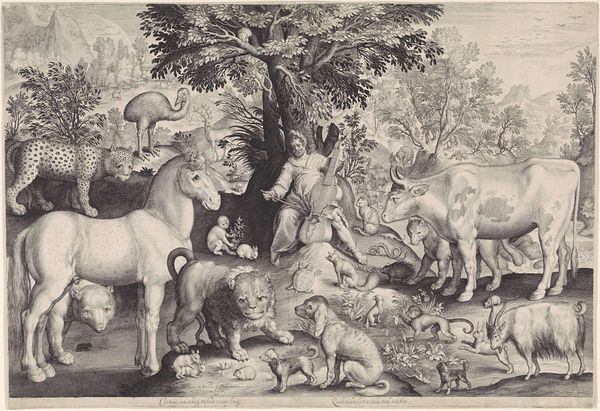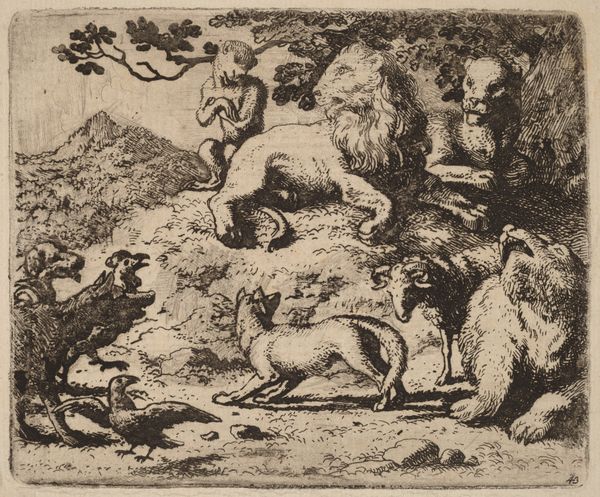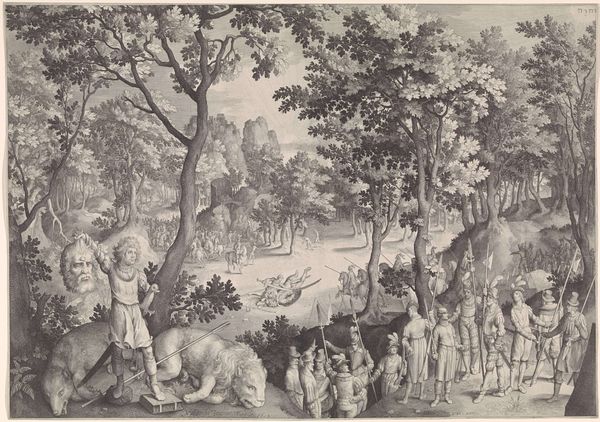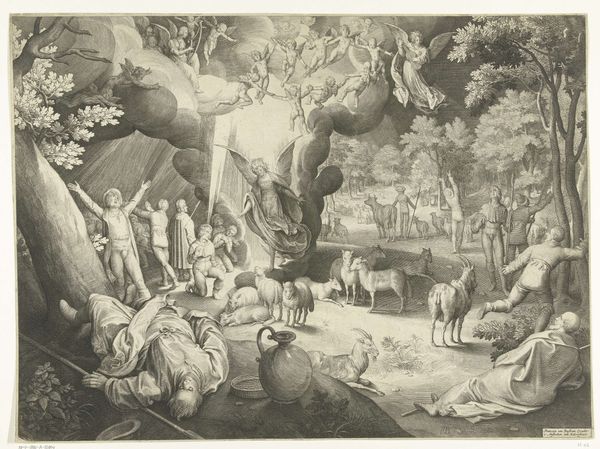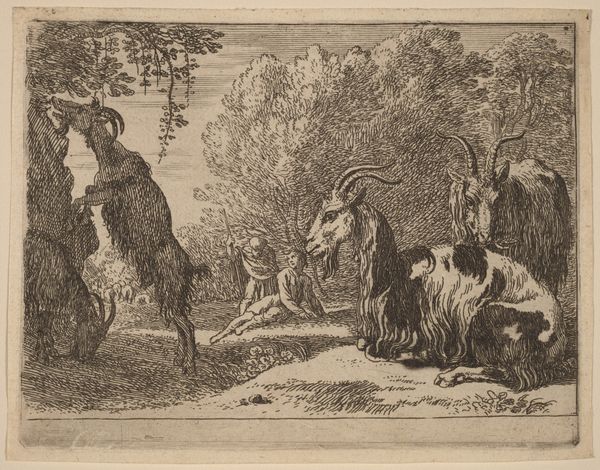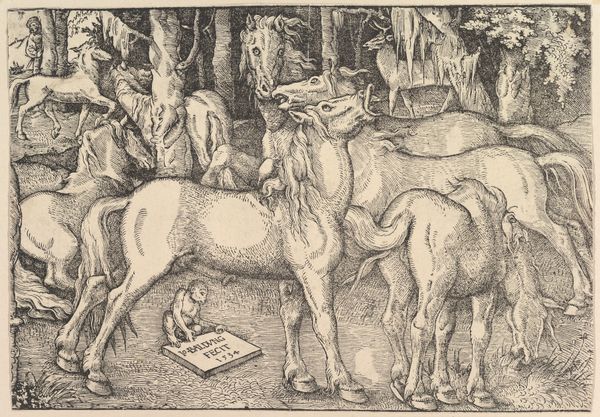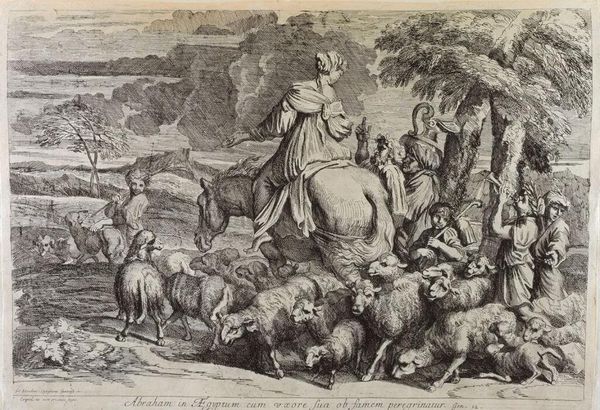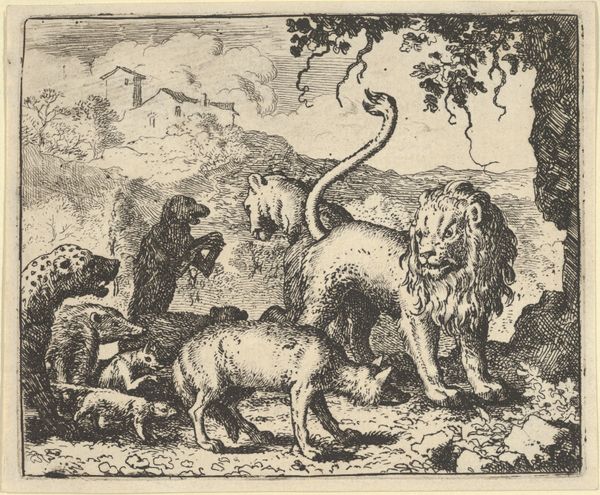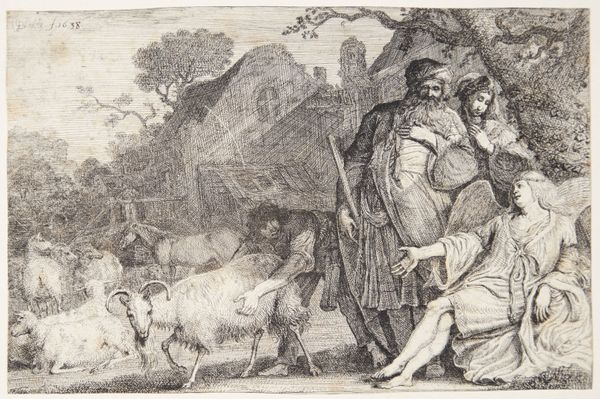
painting, oil-paint
#
narrative-art
#
fantasy art
#
painting
#
oil-paint
#
landscape
#
fantasy-art
#
figuration
#
oil painting
#
folk-art
#
romanticism
#
animal portrait
#
surrealism
#
genre-painting
#
history-painting
#
realism
Copyright: Public domain
Editor: Here we have Edward Hicks’s “Peaceable Kingdom,” created in 1834, using oil paint. It's… a very literal depiction, isn't it? Lions and lambs, children and wild animals, all coexisting. What stands out to you in terms of its composition, beyond the obvious theme? Curator: Well, let's consider the means of production here. Hicks was a Quaker minister and sign painter. How does his background as a craftsman influence the piece, in your opinion? The lack of academic polish, the flattening of space, and the almost cartoonish depiction of the animals can be read not as naive, but as a conscious rejection of high art traditions. He’s democratizing image-making. Editor: That's a compelling idea! I was focused on the image itself, the message. So you are saying that the material conditions and background of the painter directly impacted the style we see? Curator: Precisely. Think about the pigments available at the time, how they were sourced and prepared. The very materiality of the paint affects the color palette, doesn't it? It impacts our reading of the image. Also, what's happening in the background? Note the depiction of William Penn’s treaty with the Lenape Indians – a real event! Editor: I see it now. A historical encounter rendered with this idealized future, almost as a side note. So, the consumption of resources, the very act of creating the painting, tells its own story about America at that time. Curator: Exactly. And let's not forget that the artist returned to the Peaceable Kingdom theme multiple times throughout his career, constantly reworking the same set of motifs. We are encouraged to wonder, why? Was the project itself more important to the artist than the product? Editor: That is interesting. Looking at it now, understanding its production helps to elevate its meaning. Curator: Precisely! Thank you, it’s been a great reflection for us both.
Comments
No comments
Be the first to comment and join the conversation on the ultimate creative platform.
